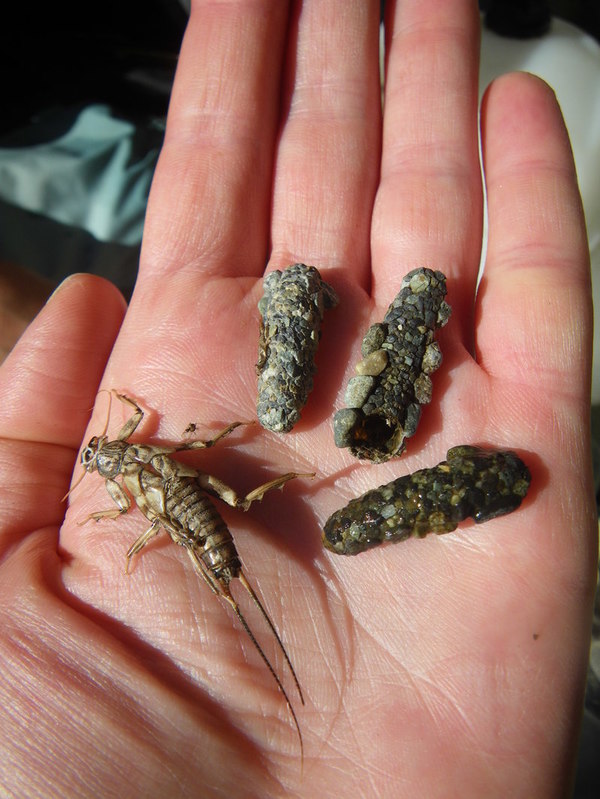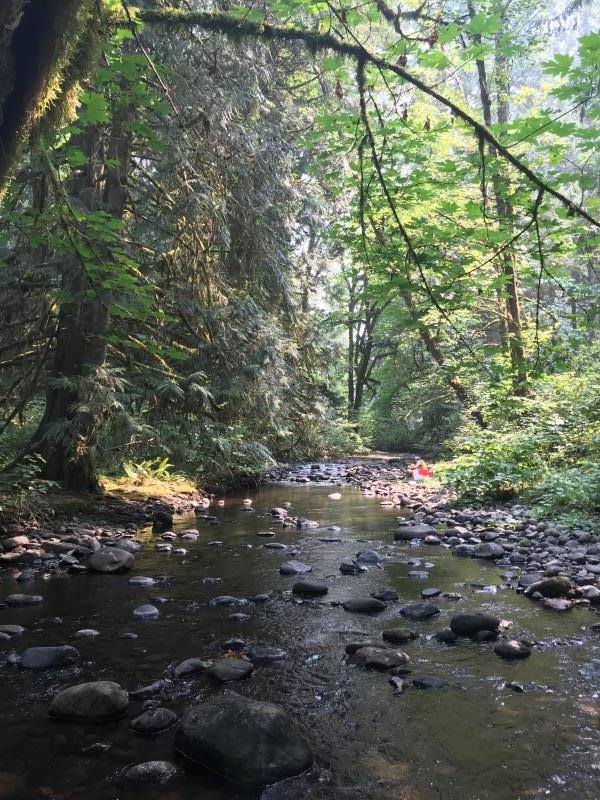Watershed visitor guide
Looking for benthic macroinvertebrates is something anyone can do. It's a fun to way to learn about our local streams. Follow these tips to reduce your impact to the stream ecosystem during your visit.

Look for exoskeletons or old cases of bugs that have hatched and become adults!
Roads and trails
- When you travel to a stream site, don't drive off of established roads. If you drive off road in the woods or along a stream, your car disturbs wildlife and degrades their habitats. It can add sediment to streams, destroy plants that control erosion, and crush animal dens. If you want to see a stream up close, park your car in a lot or on the side of the road and explore by foot.
- Use established trails when you are walking around your watershed. By using trails you will help reduce the amount of wear on the natural habitat. You won't damage herbs, shrubs, and grasses, and you won't get lost.
Trekking through
- Get a landowner's permission if you will be crossing his or her property.
- Be quiet as you walk through your watershed. Listen to the sounds of wildlife residents; disturb them as little as possible.
- Leave your dog at home. Dogs can disturb or injure wildlife and, in turn, wildlife can injure them.
- Take care not to disturb or alter wildlife habitat. A dead tree trunk or hole in the ground may be home to many kinds of wildlife.
- You know the saying: "Take only pictures; leave only footprints." Make observations and document evidence of wildlife, plants, and other organisms. But don't remove eggs, nests, organisms, or whole plants.
- Limit the number of plant or macroinvertebrate specimens you sacrifice for better identification. Plants provide food and shelter for wildlife and macroinvertebrates. Macroinvertebrates are food for fish, birds, frogs, and salamanders.
The stream

- Put any rocks and woody debris you remove back into the stream. They are habitats for fish, bugs, and plants.
- Know what kinds of fish live in a stream and their life histories. Know when they spawn and when young fish emerge from the gravel streambed. Fish are most vulnerable to disturbance at these times.
- Try to reduce impacts on the stream and its fragile stream banks. Breakdown of stream banks increases erosion and adds excessive sediment to a stream. If you are surveying a stream with a group, limit the number of people in the stream or on its banks. Choose access points to the stream that cause the least disturbance.
Tips to reduce the spread of invasive species
Trash
Take your trash with you for recycling. If nature calls, locate your "bathroom facilities" at least 100 yards away from a stream or lake.
Bug identification
- Freshwater Benthic Ecology and Aquatic Entomology Homepage from Nova Scotia.
- Macroinvertebrate Photo Gallery from Stroud Water Research Center.
- BugGuide knowledgebase of North American bugs.
More learning
- Middle school learning activity with stream bugs from Minnesota Science Teachers Education Project.
- Society for Freshwater Science An international scientific organization. The goal of the organization is to promote our understanding of freshwater ecosystems.
- Adopt-A-Stream Foundation at the Northwest Stream Center.
- The Xerces Society An international nonprofit organization. This organization dedicates itself to protecting biological diversity through invertebrate conservation.

 Translate
Translate